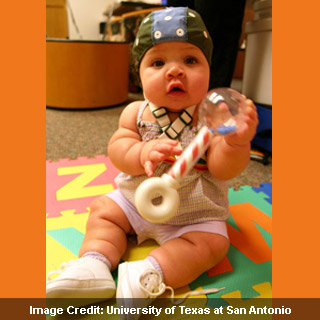
As per the new study, brains of babies belonging to a bilingual home apparently show versatility by learning different languages specifically when they are exposed to a lot of conversations at home. Also, the comparative exposure of every language like English and Spanish seemed to have an effect on their vocabulary as they became toddlers.
“The bilingual brain is fascinating because it reflects humans’ abilities for flexible thinking – bilingual babies learn that objects and events in the world have two names, and flexibly switch between these labels, giving the brain lots of good exercise,†commented Patricia Kuhl, co-author of the study and co-director of the UW’s Institute for Learning & Brain Sciences.
Initial studies have shown that monolingual infants appear to distinguish sounds of their native language. However, their capacity to differentiate sounds from an unknown language reduces. In this analysis, babies from monolingual and bilingual homes were made to sport caps fixed with electrodes to gauge brain reactions with an electroencephalogram or EEG. Babies were exposed to background speech sounds in 1 language with a contrasting sound of some foreign language appearing rarely. If the brain seems to recognize the contrasting sound, there is supposedly a signature sequence known as the mismatch response that can be identified by the EEG.
As per the outcomes, monolingual infants at 6-9 months of age apparently exhibited mismatch response for Spanish as well as English contrasting sounds. This implicated that they were seemingly aware of the alteration in both the languages. However, during 10 to 12 months of age, monolingual babies presumably showed responsiveness for just the English contrasting sound. Bilingual babies appeared to follow a different pattern. At around 6 to 9 months of age, bilinguals did not seem to have a mismatch response but as they aged to 10 to 12 months of age, they presented mismatch for both sounds. This implies that the bilingual brain looks flexible to languages for a longer span of time probably due to more exposure to an array of sounds at home.
According to lead author Adrian Garcia-Sierra, bilingual babies may be following a different route for neutrally committing to a specific language than monolingual babies. She added that when the brain response is open to 2 languages instead of just 1, the most adjustable reaction is to prolong the flexibility before the onset of perceptual narrowing that typical monolingual infants show at the end of 1 year. With a view to comprehend if brain responses at 10-12 months influenced speech in later years, the analysts conducted a follow-up when the babies reached 15 months of age. They wished to see how many Spanish and English words they were acquainted with. They found that early brain responses to language may indicate the child’s word learning potential. It came to light that the size of bilingual children’s vocabulary was likely to be linked to strength of brain responses in distinguishing languages at 10 to 12 months of age. Early exposure also seemed to have an influential effect. Babies who heard more of English at home seemed to understand more words in English. This works the same way for Spanish too. As per the experts more social communication and everyday exposure to language will help kids learn a second language.
The study is published in the Journal of Phonetics.
